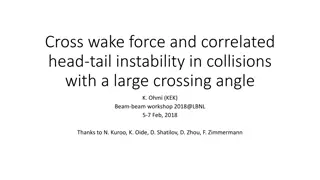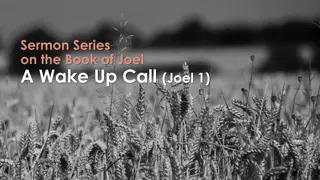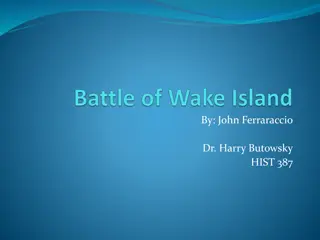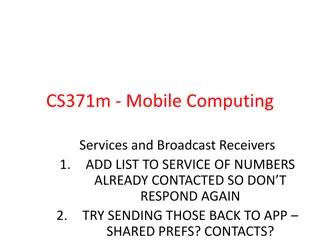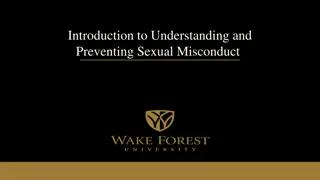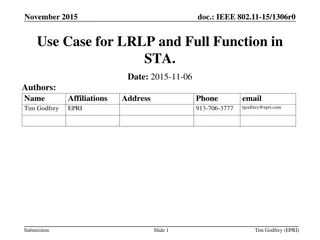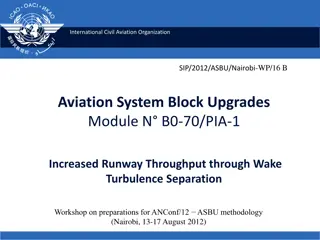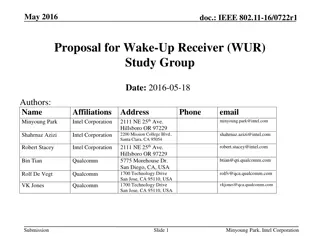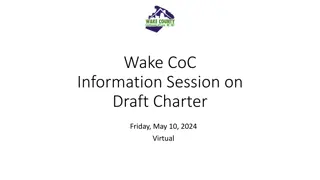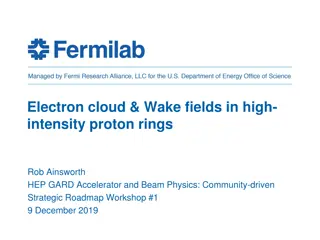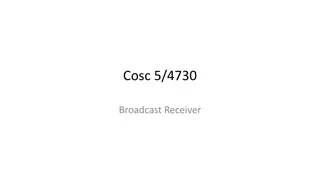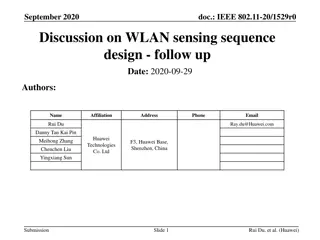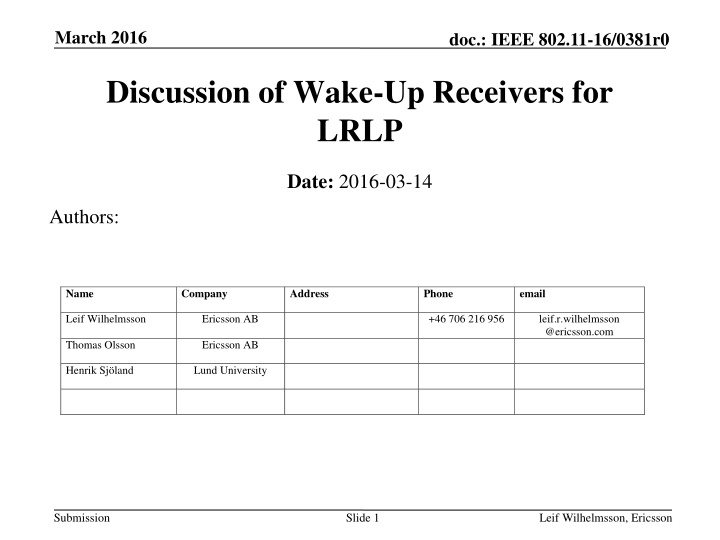
Discussion of Wake-Up Receivers for LRLP Standard
Explore the discussion on wake-up receivers for Low-Rate Long-Term Physical Layer standard, highlighting sensitivity requirements, state-of-the-art examples from Lund University, and potential improvements for low-power operation.
Download Presentation

Please find below an Image/Link to download the presentation.
The content on the website is provided AS IS for your information and personal use only. It may not be sold, licensed, or shared on other websites without obtaining consent from the author. If you encounter any issues during the download, it is possible that the publisher has removed the file from their server.
You are allowed to download the files provided on this website for personal or commercial use, subject to the condition that they are used lawfully. All files are the property of their respective owners.
The content on the website is provided AS IS for your information and personal use only. It may not be sold, licensed, or shared on other websites without obtaining consent from the author.
E N D
Presentation Transcript
March 2016 doc.: IEEE 802.11-16/0381r0 Discussion of Wake-Up Receivers for LRLP Date: 2016-03-14 Authors: Name Company Address Phone email Leif Wilhelmsson Ericsson AB +46 706 216 956 leif.r.wilhelmsson @ericsson.com Thomas Olsson Ericsson AB Henrik Sj land Lund University Submission Slide 1 Leif Wilhelmsson, Ericsson
March 2016 March 2016 doc.: IEEE 802.11-16/0381r0 Introduction This is a continued discussion of the LP-WUR (low-power wake- up receiver) that was brought up in [1] In this presentation we present a state-of-the-art example of wake- up receiver from Lund University We also address some questions related including WURs as part of an upcoming LRLP standard Submission Slide 2 Leif Wilhelmsson, Ericsson
March 2016 doc.: IEEE 802.11-16/0381r0 Outline Recap of wake-up receiver Sensitivity requirements for LRLP State-of-the-art example of wake-up receiver from Lund University Possible improvements Conclusions Submission Slide 3 Leif Wilhelmsson, Ericsson
March 2016 doc.: IEEE 802.11-16/0381r0 Wake-up receiver - recap A low-power receiver that can detect an incoming wake-up request Incoming wake-up request may be duty-cycled to achieve stand-by power consumption below level of the wake-up receiver A wake-up receiver may operate in-band or in another frequency band Wake-up Receiver [2] Submission Slide 4 Leif Wilhelmsson, Ericsson
March 2016 doc.: IEEE 802.11-16/0381r0 Wake-up sensitivity requirements If the wake-up receiver is seen as a low-power option for short range only, then the wake-up receiver sensitivity may be quite poor. We may still want to have a sensitivity requirement? If the wake-up receiver shall be possible to use at all times it needs the same sensitivity as the regular receiver (hard to achieve low power in that case) Any requirement for the wake-up receiver needs to have a reasonable balance to achieve both low power and sufficient usefulness. Submission Slide 5 Leif Wilhelmsson, Ericsson
March 2016 doc.: IEEE 802.11-16/0381r0 Wake-up receiver from Lund University (1/4) Research on wake-up receivers at LU was conducted around 2012-2014 [3-4] The research shows large gain by using a combination of periodic wake-up beacons together with wake-up receivers LU implementation show ~50uW, 0.07mm2 for wake-up receiver in 65nm CMOS It is possible to reach 1uw stand-by power using periodic wake-up beacons Submission Slide 6 Leif Wilhelmsson, Ericsson
March 2016 doc.: IEEE 802.11-16/0381r0 Wake-up receiver from Lund University (2/4) On-Off Keying to allow low-power implementation 50uW 2.45GHz Wake-up receiver 97% beacon detection and 0.04% false alarm probability at -94dBm Wake-up Receiver Submission Slide 7 Leif Wilhelmsson, Ericsson
March 2016 doc.: IEEE 802.11-16/0381r0 Wake-up receiver from Lund University (3/4) Wake-up Beacon and detector Submission Slide 8 Leif Wilhelmsson, Ericsson
March 2016 doc.: IEEE 802.11-16/0381r0 Wake-up receiver from Lund University (4/4) Detector output is band-pass filtered Low frequency information lost Use Manchester coding( 1, 0 10, 01 ) Band-pass characteristic Improves sensitivity The figure shows the measured BER for a Manchester coded sequence varying data rate RF powers of -85, -88 and -90 dBm. Submission Slide 9 Leif Wilhelmsson, Ericsson
March 2016 doc.: IEEE 802.11-16/0381r0 Possible Improvements Using a fairly old technology (65nm CMOS) it seems to be possible to make a ~50uw wake-up receiver. Power consumption will likely improve further using a modern 28nm or 14nm CMOS or SoI technology Well-balanced requirements on the wake-up receiver can enable both low power and improve usefulness compared to having only proprietary solutions. Without requirements, poor implementations may cause poor implementations giving the standard bad reputation The design of the preamble is key to enable good solutions for wake- up receivers Submission Slide 10 Leif Wilhelmsson, Ericsson
March 2016 doc.: IEEE 802.11-16/0381r0 Conclusions Wake-up receivers can potentially help achieve very low standby power, but lot of questions remain Current best wake-up receivers with reasonable sensitivity consume around 50uW active power Typically simple OOK technique is used Using preamble design tailored for wake-up receivers Potential for further power (and area) reduction using state-of-the- art technology (28nm and below) Need to decide how to treat Wake-up receivers in standardization Submission Slide 11 Leif Wilhelmsson, Ericsson
March 2016 doc.: IEEE 802.11-16/0381r0 Straw Poll Should the wake up receiver have a requirement on sensitivity? Y/N/A: Submission Slide 12 Leif Wilhelmsson, Ericsson
March 2016 doc.: IEEE 802.11-16/0381r0 Straw Poll Wake-up receivers may operate in-band or in a separate (lower) frequency band. Should wake-up receivers operate in-band? Y/N/A: Submission Slide 13 Leif Wilhelmsson, Ericsson
March 2016 doc.: IEEE 802.11-16/0381r0 References 1. M. Park, S. Azizi, R. Stacey, E. Perahia. LP-WUR (Low-Power Wake-Up Receiver): Enabling Low-Power and Low-Latency Capability for 802.11. 2016-01-18 N. Pletcher, J. M. Rabaey, Ultra-Low Power Wake-Up Receivers for Wireless Sensor Networks, Technical Report No. UCB/EECS-2008- 59, May 20, 2008. C. Bryant, H. Sj land, A 2.45GHz, 50uW wake-up receiver front-end with 88dBm sensitivity and 250kbps data rate ESSCIRC 2014, Venice, Italy, pp. 235-238. N. Seyed Mazloum, O. Edfors, Performance Analysis and Energy Optimization of Wake-Up Receiver Schemes for Wireless Low- Power Applications, IEEE Transactions on Wireless Communications, Vol. 13, No. 12, pp. 7050-7061, 2014. 2. 3. 4. Submission Slide 14 Leif Wilhelmsson, Ericsson
March 2016 doc.: IEEE 802.11-16/0381r0 Wake-up receiver from Lund University Comparison other Wake-up receivers For references in table see [3] Submission Slide 15 Leif Wilhelmsson, Ericsson




